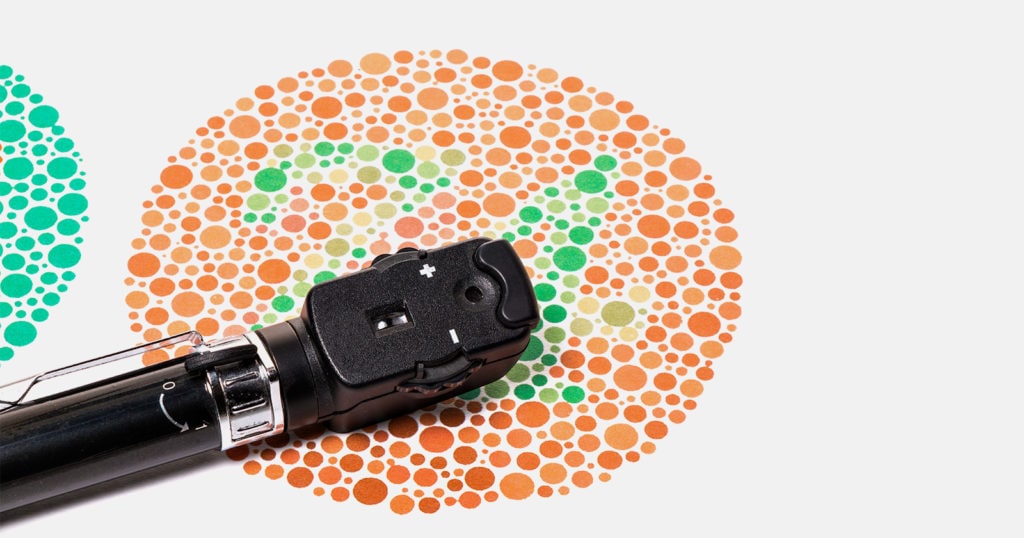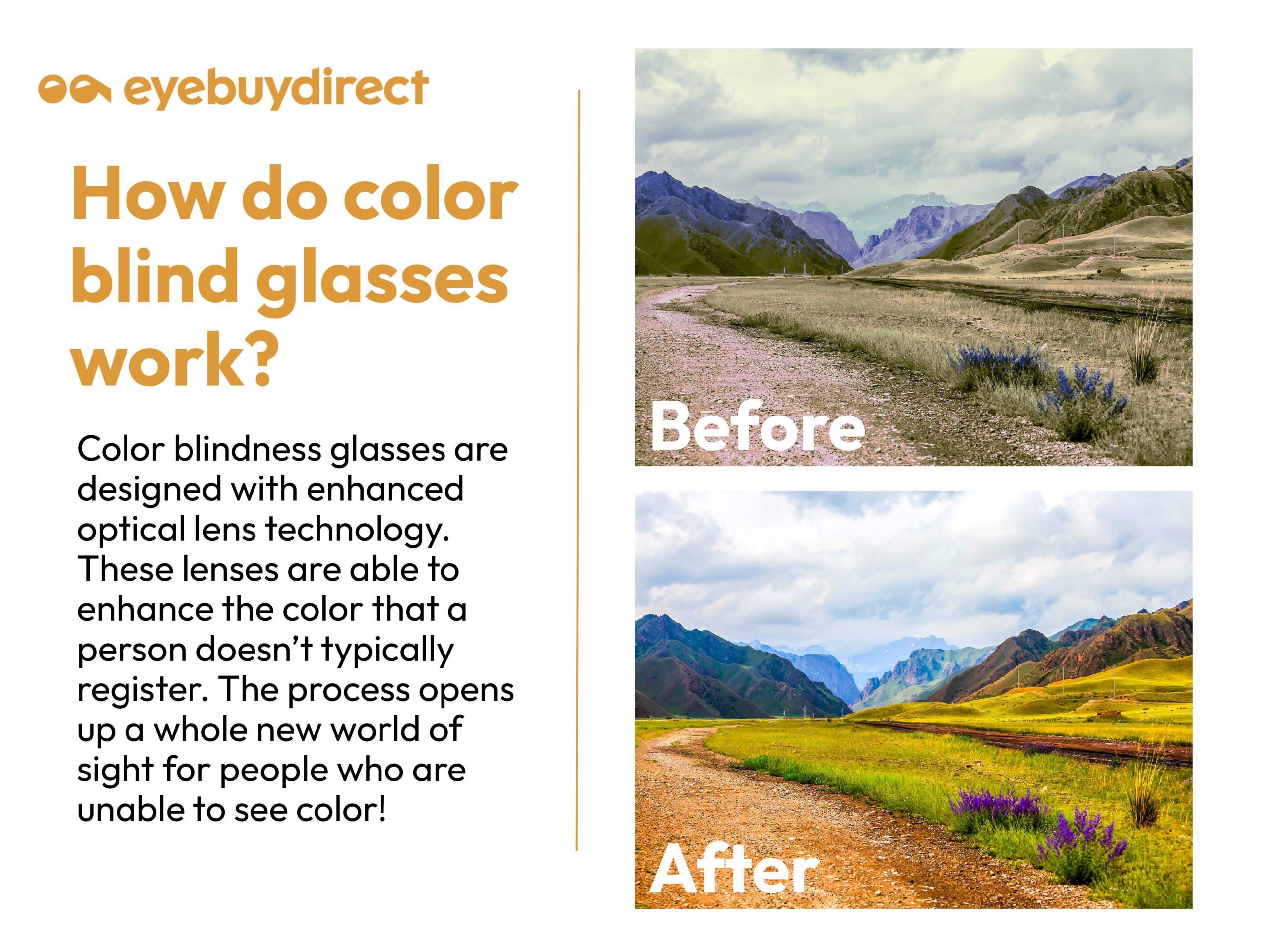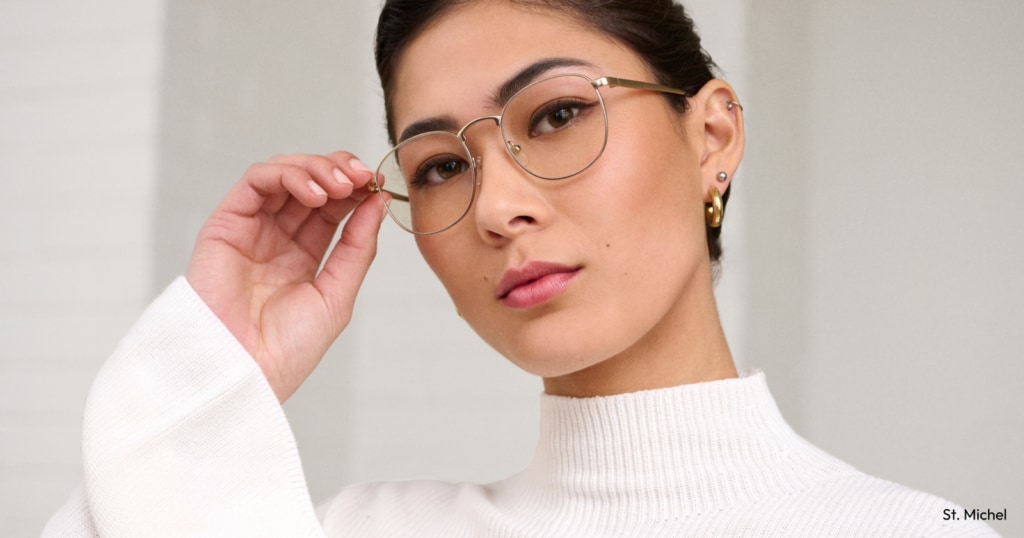Reviewed by Thomas Stokkermans, OD, PhD on July 21, 2023
From bright orange sunsets to brilliant blue skies, the world is bursting with a rainbow of colors to be seen. Unfortunately, not everyone gets to enjoy the variety of hues that surround us — something that is so often taken for granted!
Around 300 million people suffer from color blindness. This means the color spectrum they see is more limited when compared to others. The most common form of the condition affects up to 8% of men and 1% of women.
The severity of color vision deficiency varies from person to person. Some may only have trouble determining the brightness of a specific color, while others may not be able to tell one shade from another.

What Causes Color Blindness?
Color blindness, or color vision deficiency, is caused by a malfunction or absence of some of the light-sensitive cells in the retina called the cones.
The retina has three cones — red, blue, and green — that each detect different wavelengths of light. When these cones don’t function properly, or when they’re absent, color vision deficiency occurs. For example, someone with malfunctioning red or green light-sensing cones would suffer from red-green color blindness.
The most common form of color blindness is red-green color deficiency. This type is often inherited. Other types, such as blue-yellow color blindness and complete color blindness, are much less common.
When the condition is not inherited, color blindness and color vision loss may be caused by injuries and diseases that affect the brain, nervous system, or eyes — specifically the retina and optic nerve. Diseases that can impact color vision include:
- Glaucoma
- Macular degeneration
- Cataracts
- Diabetes
- Multiple sclerosis (MS)
- Alzheimer’s disease
Color vision loss may also be caused by:
- The side effects of certain medications
- Exposure to certain chemicals
- Aging
While there is no known cure, colorblind corrective glasses are a great option for those who have a hard time identifying colors. They aren’t a cure, but the glasses can help improve color perception in many people who do not have normal color vision.
So, How Do Colorblind Correction Lenses Work?
Specially designed glasses for color blindness may improve the wearer’s ability to perceive color contrast, vibrancy, and depth.
EnChroma glasses and other color blindness glasses are designed with enhanced optical lens technology. These lenses are able to enhance the color that a person doesn’t typically register. The process opens up a whole new world of sight for people who are unable to see color!
But remember: This is not a cure, and results do vary. Color perception is often different for each person — even among those with typical color vision — so the experience will not be the same for everyone. Talk to your local eye doctor about your specific vision needs and find out if colorblind correction lenses might work for you.
If it’s been over a year, schedule an eye exam so your eye doctor can check the health of your eyes and address any other vision issues. Comprehensive exams include a color blind test that tells your doctor how well you can recognize color. This information is critical when it comes to treatment!
Where to Buy Colorblind Glasses
Most of our glasses and sunglasses can be made to accommodate red-green color deficiency. You can add this feature to your lenses by taking the following steps as you shop:
- Select your preferred style of glasses or sunglasses.
- Click on the “Select Lenses” button and choose your usage: Single Vision, Bifocal & Progressive, Reading, or Non-Prescription.
- Enter your prescription for prescription lenses.
- In the step to “Choose a lens color,” select “Sun” (it’s the last option). This will bring you to the “Sun protection” options.
- Select “Colorblind” (the last option).
When you choose colorblind glasses from Eyebuydirect, we’ll add a special magenta tint to the lenses, which helps enhance red-green color perception. This added feature costs just $99.
Ready to shop? Why not look through our frames selection? With over 2,000 styles to choose from, you might just find the perfect pair of eyeglasses or sunglasses.
Sources
- Color Blindness. Cleveland Clinic. March 2023.
- How Color Blindness Is Tested. American Academy of Ophthalmology. August 2017.
- Types of Color Blindness. National Eye Institute. June 2023.
- Color Vision Deficiency. American Optometric Association. Accessed July 2023.





